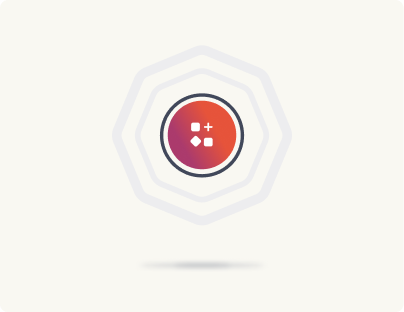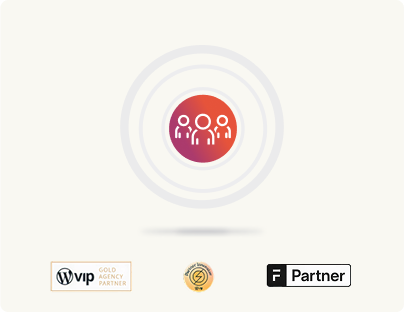Contentful vs hybrid/headless WordPress: Updates, maintenance, and support
When choosing a CMS for enterprise use, it’s easy to focus on features and flexibility. But what happens after launch when you’re updating APIs, maintaining integrations, and keeping the system secure, often matters more in the long run.
Let’s look at how Contentful and WordPress handle updates, maintenance, and support and what that means for real enterprise teams managing live, high-stakes digital experiences.
Maintaining a Contentful stack
Contentful’s SaaS model has a clear appeal: updates, infrastructure, and scaling are handled by the platform. You don’t touch servers. You don’t apply patches. You just build and deploy.
For teams that want to stay focused on content and frontend development, this is a win. But like most SaaS platforms, what’s taken off your plate is also taken out of your hands.
- You still need to monitor API usage, rate limits, and integration performance.
- Content model changes ripple into API responses, so tight coordination between content and frontend teams is critical.
- When APIs are versioned or deprecated, you’re responsible for migration, Contentful doesn’t auto-refactor your frontend code.
This means Contentful’s simplicity on the surface can still demand high coordination under the hood, especially in complex or multi-team setups.
Maintaining a hybrid/headless WordPress stack
WordPress gives you more control and with it, more responsibility.
In traditional setups, updates are as easy as a click. In hybrid or headless environments, you’ll need to coordinate updates across the backend, the custom APIs, and the decoupled frontend frameworks (like React or Vue).
That said, the WordPress ecosystem is built for maintainability:
- Core updates are predictable and backwards-compatible
- Plugins notify you of compatibility issues and version mismatches
- Custom APIs and headless logic can be managed using CI/CD pipelines
If you’re using managed platforms like WordPress VIP, infrastructure, updates, and performance tuning are all handled, leaving your team to focus on product and content.
For most enterprise teams, the added effort translates into more flexibility, especially when unique workflows or frontend requirements are involved.
Applying updates to Contentful
Contentful handles most of its updates on the backend, ensuring a seamless experience for its users. However:
- Enterprises must plan for API version migrations when Contentful deprecates older APIs.
- Updating integrations and middleware connecting Contentful to frontend systems or third-party tools requires developer intervention.
- Content models must be reviewed and adapted to incorporate new features or optimizations introduced by Contentful.
Also, Contentful follows a versioned API approach, which means that older versions of the API remain accessible even after new versions are released. However, its backward compatibility depends heavily on the API management practices of individual teams, making updates more challenging. Also, Contentful’s reliance on custom code means updates can break integrations unless carefully managed.
Applying updates to headless/hybrid WordPress
Updating a headless or hybrid WordPress setup involves a multi-layered approach:
- Core and plugin updates: WordPress makes it easy to update the core software and plugins through its intuitive admin interface. However, headless setups should also involve testing these updates to ensure compatibility with the custom API endpoints and frontend applications.
- Custom code updates: Custom themes or plugins that power headless functionality need regular code reviews to maintain compatibility with both WordPress and the front-end frameworks.
- Frontend framework updates: If the decoupled frontend uses React, Vue, or Angular, updates to these frameworks must be carefully managed to avoid breaking changes.
Backward compatibility is one of WordPress’s strengths. Its development community prioritizes maintaining compatibility with older plugins, themes, and APIs. Even in headless or hybrid setups, WordPress retains this principle, ensuring that updates to the core software don’t immediately disrupt customizations or third-party integrations. However, as enterprises scale, thorough testing during updates is essential to maintain this stability, especially when custom APIs or decoupled frontends are involved.
Contentful’s support options
With Contentful’s Premium plan, you can expect enterprise-level support, including:
- Technical support
- Uptime and Support SLAs
- High-priority support
- Customer Success Manager
- Professional Services offerings
- Infosec and legal review
While these options are reliable, the reliance on Contentful’s internal teams for advanced troubleshooting can limit flexibility in addressing highly customized use cases.
WordPress’s support options
WordPress’s open-source nature offers a unique support ecosystem:
- Community support: An extensive global community of developers, designers, and agencies actively contributes to forums, documentation, and tutorials.
- Professional agencies: Enterprises can partner with specialized WordPress development agencies to receive tailored support for their hybrid or headless installations.
- Managed hosting providers: Platforms like WordPress VIP provide dedicated support, including performance monitoring, security management, and proactive troubleshooting.
This multi-faceted support network ensures that enterprises can find the expertise they need, whether it’s for general guidance or advanced technical challenges.
To sum it up…
If your team wants a platform that just works out of the box, Contentful’s managed model has obvious advantages. It removes infrastructure overhead and simplifies maintenance, at least until your use case drifts outside the standard.
But if you’re running a custom frontend, managing multi-brand complexity, or building a long-term content foundation, WordPress gives you the freedom to adapt. Its approach to updates, modular maintenance, and broad support options makes it a better long-term fit for enterprises that value flexibility, control, and resilience.







